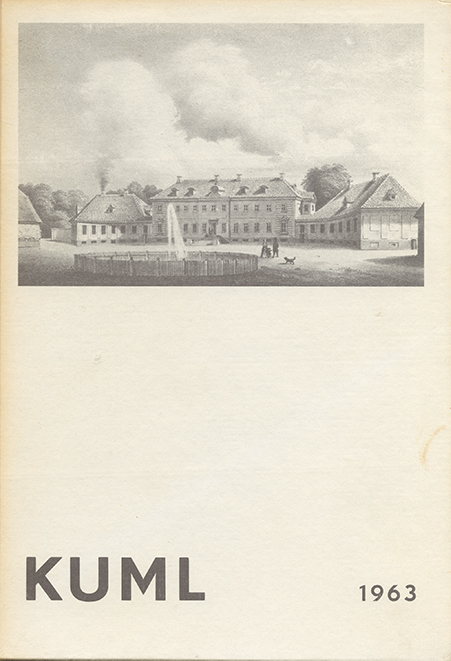Runeindskriften på rosetfibulen fra Nøvling
DOI:
https://doi.org/10.7146/kuml.v13i13.103998Keywords:
runic inscription, runeindskrift, rosetfibula, rosette fibula, Nøvling, runer, runes, rune, futhark, early runes, tidlige runerAbstract
The runic inscription on the rosette fibula from Nøvling
The inscription on the rosette fibula from Nøvling is, written in the earlier runic alphabet, the futhark of 24 signs, which was used from the time of the invention of runes about, or shortly after, the beginning of the Christian Era until about 6-800 A. D.
It reads b i d a w a r i j a z t a i g i d (a i), all the runes being clearcut and of even height except the last two, where the upper oblique stroke of the a is unduly long and the i unduly tall.
b i d a w a r i j a z is an otherwise unknown man's name of quite normal form; the end component -w a r i j a z having the meaning of "ward" or "protector", while b i d a -may be derived from biða (to wait), biðja (to pray) or binda (to bind).
T a l g i d (a i) is 3rd person singular past tense of the verb telgja, to carve (in wood), but the form to be expected is t a l g i d e. There is no need to postulate an archaeism or a dialect survival of a pre-Christian verbal ending. It is clear that Bedver (as we may unscientifically call him) was the rune-master who cut on a piece of wood the inscription which the goldsmith copied on the fibula. He may have cut the final e (ᛖ) of t a I g i d e somewhat carelessly; in any case the goldsmith copied it incorrectly as a i (ᚨᛁ).
Erik MoltkeDownloads
Published
How to Cite
Issue
Section
License
Fra og med årgang 2022 er artikler udgivet i Kuml med en licens fra Creative Commons (CC BY-NC-SA 4.0).
Alle tidligere årgange af tidsskriftet er ikke udgivet med en licens fra Creative Commons.


